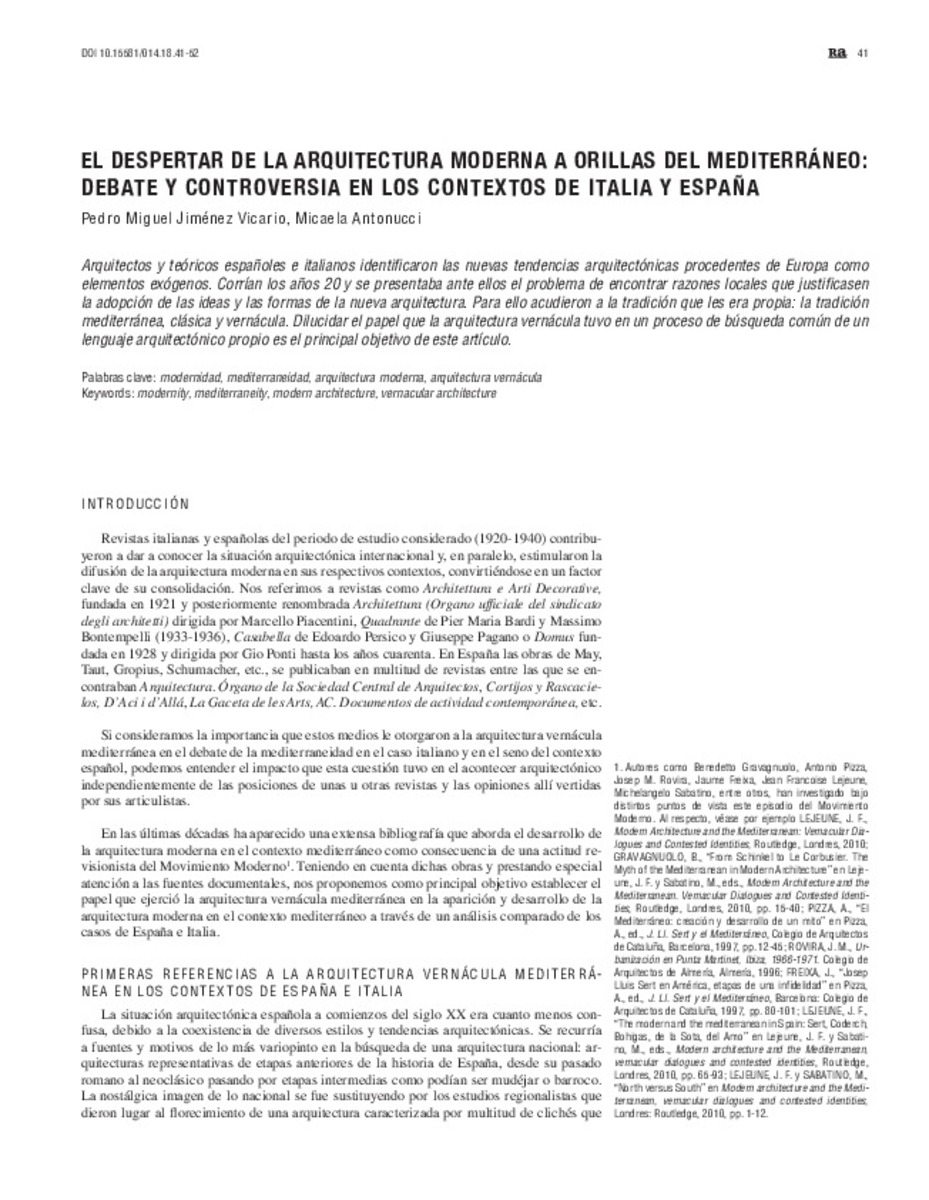El despertar de la arquitectura moderna a orillas del Mediterráneo: debate y controversia en los contextos de Italia y España
Other Titles:
The awakening of modern architecture on Mediterranean shores: debate and controversy in the Italian and Spanish contexts
Keywords:
Modernidad
mediterraneidad
arquitectura moderna
arquitectura vernácula
modernity
mediterraneity
modern architecture
vernacular architecture
Publisher:
Servicio de Publicaciones de la Universidad de Navarra
Citation:
Jiménez-Vicario, P. M. (Pedro Miguel); Antonucci, M. (Micaela). "El despertar de la arquitectura moderna a orillas del Mediterráneo: debate y controversia en los contextos de Italia y España". Ra. Revista de Arquitectura. 18, 2016, 41 - 52
Statistics and impact
0 citas en

0 citas en

Items in Dadun are protected by copyright, with all rights reserved, unless otherwise indicated.







